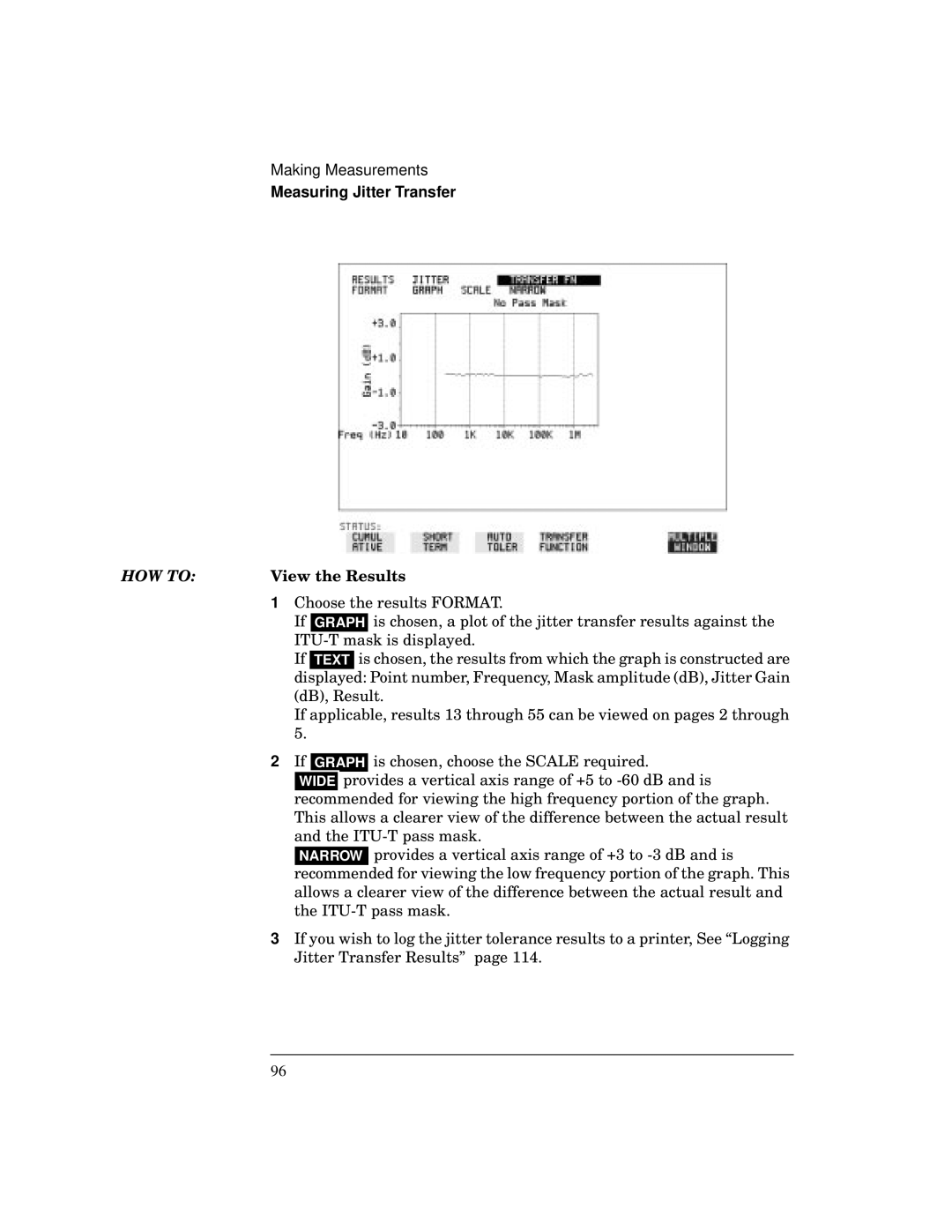
Making Measurements
Measuring Jitter Transfer
HOW TO: | View the Results |
1Choose the results FORMAT.
If GRAPH is chosen, a plot of the jitter transfer results against the
If TEXT is chosen, the results from which the graph is constructed are displayed: Point number, Frequency, Mask amplitude (dB), Jitter Gain (dB), Result.
If applicable, results 13 through 55 can be viewed on pages 2 through 5.
2If GRAPH is chosen, choose the SCALE required.
WIDE provides a vertical axis range of +5 to
NARROW provides a vertical axis range of +3 to
recommended for viewing the low frequency portion of the graph. This allows a clearer view of the difference between the actual result and the
3If you wish to log the jitter tolerance results to a printer, See “Logging Jitter Transfer Results” page 114.
96
